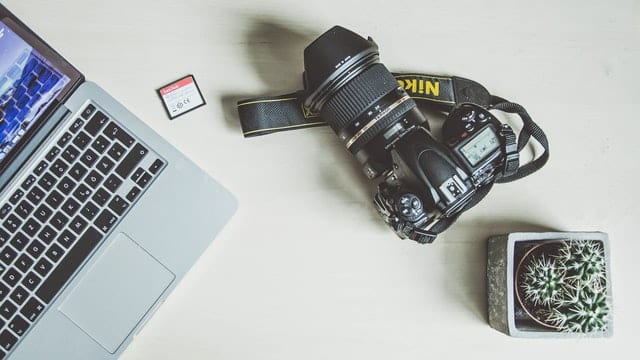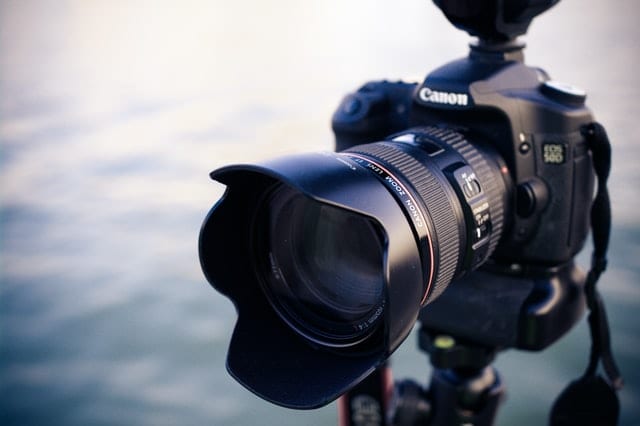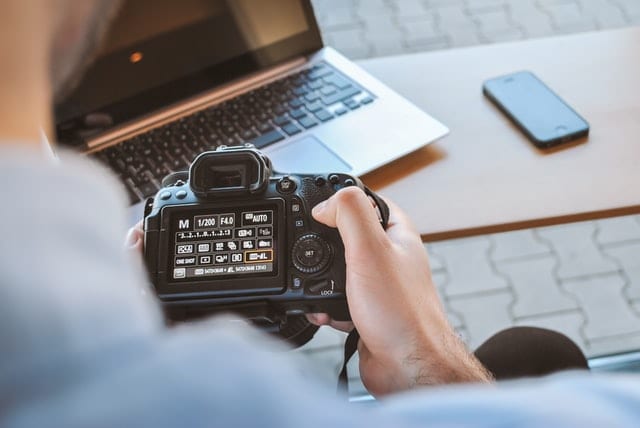Unlocking the full potential of your DSLR isn’t just about mastering settings; it’s also about the gear that elevates your photography game.
From capturing sharp, vivid images to ensuring your camera’s longevity, we’ve got the rundown on the must-have accessories that’ll transform your DSLR experience.
Whether you’re a budding photographer or a seasoned pro, stick with us as we explore the top 5 things you need to get for your DSLR that are absolute game-changers.
GET FOR YOUR DSLR
What Is a DSLR?
A DSLR, or Digital Single Lens Reflex camera, is a digital camera that has interchangeable lenses.
It captures images using an optical system which includes a mirror and prism to redirect light from the lens to either the viewfinder or image sensor depending on whether it’s being used for viewing live subjects or taking photos.
These cameras are usually more expensive than point-and-shoot cameras, but they have the added benefit of being able to capture the world in high quality.
Lens Filters
When diving into the world of DSLR filmmaking, we often underestimate the power of lens filters.
Yet, they’re instrumental in elevating the visual quality of our footage.
Lens filters can modify or enhance the light entering our lens – shaping the final image in ways that post-production might struggle to replicate.
We recognize that the versatility achieved with lens filters is indispensable.
They allow for better exposure control, color correction, and can even protect our lenses from probable hazards.
Consider Neutral Density (ND) filters as an essential for outdoor shoots; they reduce light intensity, enabling us to maintain our desired depth of field even in bright conditions.
Another key player in the lens filter game is the Polarizing filter.
This type isn’t just for stunning blue skies in travel documentaries; it reduces glare and reflections, making it an ally for any shoot involving water or glass.
Polished narrative scenes benefit from these filters as they help capture the nuance in our visuals.
Besides, we mustn’t overlook the creative possibilities that specialized filters bring.
From starburst effects to soft-focus ‘dreaminess,’ adding a unique touch to our scenes can set our work apart.
We’ve seen avant-garde and indie filmmakers use filters to great effect, often defining the aesthetic of their films.
Below are a few filter types we find indispensable:
- Neutral Density (ND) Filters – Manage light exposure,
- Polarizing Filters – Reduce reflections and enhance colors,
- UV Filters – Protect the lens and filter out UV light,
- Graduated ND Filters – Balance high-contrast scenes,
- Special Effects Filters – Add creativity to visuals.
Mastering the use of lens filters enables us to tackle various lighting conditions while also crafting a signature look for our films.
They’re small, portable, and when used correctly, the impact on our footage is significant.
Given their relative affordability and the magnitude of their effect, it’s wise to invest in a set that suits our particular filming needs.
Tripod
When diving into DSLR filmmaking, a sturdy tripod is a non-negotiable essential in our toolkit.
It’s not just a stand for our camera – it’s the backbone of a steady shot and the enabler of smooth pans and tilts.
A tripod can single-handedly elevate our production quality and enable us to execute shots that would be impossible hand-held.
We’ve found that investing in a quality tripod pays dividends in the long run, both in terms of durability and performance.
Here’s why a robust tripod should be at the top of our shopping list:
- Stability – It keeps our camera still, which is pivotal for long exposures, time-lapses and stable video footage.
- Versatility – With adjustable legs and heads, a tripod can adapt to uneven terrain and help us frame the perfect shot.
- Precision – It allows for minute adjustments in composition and holds the camera steady during those adjustments.
It’s not just about having a tripod, but choosing the right one that complements our style of filmmaking.
A heavy-duty tripod is great for studio work or locations where portability isn’t an issue.
On the other hand, a lightweight and compact tripod might be better for travel documentaries or run-and-gun filmmaking.
The weight-bearing capacity should match our camera and lens setup to prevent any mishaps during shoots.
Features like a fluid head for seamless panning and locking mechanisms for quick setup could be vital for our workflow.
Apart from the practical benefits, tripods can actually enhance our creativity.
They force us to slow down and consider our shots more carefully, potentially leading to more thought-out and impactful footage.
In iconic movies such as The Revenant, the use of tripod shots contributed to the film’s immersive and visually arresting storytelling.
We must also consider the material of the tripod; carbon fiber options offer lightness and durability, whereas aluminum tripods tend to be more cost-effective.
With the right tripod, our filmmaking process becomes more efficient and our end product significantly more professional.
External Flash
While filming with a DSLR, natural light won’t always meet our needs.
That’s when an external flash becomes an essential piece of equipment.
It provides the additional lighting required to capture high-quality footage, especially in low-light conditions.
With an external flash, we gain the flexibility to control the intensity and direction of light, bringing out the best in every scene.
An external flash offers us numerous creative possibilities that are simply unattainable with a camera’s built-in flash.
Features such as bounce and swivel capabilities allow us to redirect light, reducing harsh shadows and creating more natural-looking scenes.
also, the use of diffusers and gels with an external flash can help us achieve a specific mood or tone, an invaluable asset when striving for a particular aesthetic in our filmmaking.
When choosing an external flash for our DSLR, we must consider various factors:
- Compatibility with our camera,
- The guide number, which is a measure of the flash’s power,
- The recycling time, indicating how quickly the flash is ready to use again,
- Whether it has through-the-lens (TTL) metering, which helps in automatically controlling the flash output based on the exposure of the scene.
Investing in a reliable external flash opens up a whole new realm of possibilities for our film projects, from crafting dramatic lighting effects to enhancing the overall visual quality of our work.
As we incorporate this versatile tool into our filmmaking arsenal, we’ll find it indispensable for producing professional-grade content.
Camera Bag
Investing in a high-quality camera bag is essential for any DSLR owner.
A durable camera bag not only protects your camera and accessories from the elements but also makes it easier to transport your gear.
We’ve found that the best camera bags for DSLR filmmaking are those that offer customizable compartments.
This feature allows us to organize and access our equipment quickly, which is crucial when we need to capture a fleeting moment on set.
A camera bag’s protective padding is vital to safeguard our gear during travel.
Shock absorption and water-resistant materials are key characteristics we look for to keep our equipment secure.
Here are some features that we consider non-negotiable:
- Ample padding and secure fastening,
- Adjustable interior dividers,
- Quick access pockets for frequently used items.
While style might be a personal preference, functionality should never be compromised.
Many camera bags come in a range of designs but always prioritize ones with ergonomic support, particularly if you’ll be carrying heavy equipment across various locations.
finally, selecting a bag with a silent opening mechanism is advantageous.
We can’t risk a loud Velcro rip interrupting a critical take or spooking wildlife during a nature shoot.
Remote Shutter Release
Every seasoned filmmaker knows the frustration of camera shake during those critical still shots.
That’s where a remote shutter release becomes an indispensable tool.
It allows us to trigger the camera from a distance, ensuring that our footage remains sharp and clear.
also, it’s a win for those times when we need to be away from the camera but in full control.
Remote shutter releases come in a range of types – wired and wireless.
Each serves a unique purpose depending on the shooting scenario.
Wired ones are reliable with no batteries required, while wireless allows freedom of movement, beneficial for dynamic shooting environments.
Here are some benefits of using a remote shutter release in DSLR filmmaking:
- Prevention of camera shake leading to clearer footage,
- Ability to capture long-exposure shots without touching the camera,
- Remote operation of the camera when the filmmaker is not positioned behind it.
A remote can also come in handy for capturing time-lapse sequences.
With the ability to program shooting intervals, it’s much simpler to create stunning time-lapses with consistent framing.
also, it’s ideal for those low-light conditions where even the slightest touch can lead to blurred images.
A filmmaker’s toolkit is incomplete without this device.
Various models are available, with features ranging from basic shutter release to complex intervalometers.
Whether it’s the simplicity of a wired trigger or the advanced features of a smart wireless system, choose the one that best fits our shooting style and needs.
5 Things You Need To Get For Your Dslr – Wrap Up
Arming ourselves with the right accessories can elevate our DSLR filmmaking from good to great.
We’ve explored essential items that not only protect our gear but also enhance our shooting capabilities.
Let’s not overlook the importance of a sturdy camera bag or the clarity a remote shutter release can bring to our work.
By choosing the tools that align with our creative vision and practical needs we’re setting ourselves up for success.
Remember it’s these smart additions to our kit that can make all the difference in capturing those stunning shots we’re after.
So let’s gear up and get ready to create with confidence!
Frequently Asked Questions
What Is The Article Mainly About?
The article focuses on the essential gear for DSLR filmmaking, specifically emphasizing the importance of a high-quality camera bag and a remote shutter release.
Why Is A High-quality Camera Bag Important For Dslr Filmmaking?
A high-quality camera bag is vital for protecting equipment, organizing gear, and ensuring ease of transport during DSLR filmmaking.
What Is A Remote Shutter Release And Its Importance In Dslr Filmmaking?
A remote shutter release is a device that allows you to trigger your camera’s shutter remotely, which is crucial for preventing camera shake and capturing clear, stable footage in DSLR filmmaking.
How Does A Remote Shutter Release Benefit Long-exposure Shots?
It permits photographers to capture long-exposure shots without physically touching the camera, reducing the risk of introducing shake and blurring the image.
Can A Remote Shutter Release Operate The Camera Remotely?
Yes, a remote shutter release can operate the camera from a distance, which is ideal for situations where the filmmaker cannot be directly behind the camera.
Why Is A Remote Shutter Release Essential For Capturing Time-lapse Sequences?
A remote shutter release is essential for capturing time-lapse sequences because it allows for consistent and precise timing between exposures without manual intervention.
How Should One Choose A Remote Shutter Release?
Choose a remote shutter release that complements your shooting style and needs, considering factors like compatibility, range, features, and reliability.





